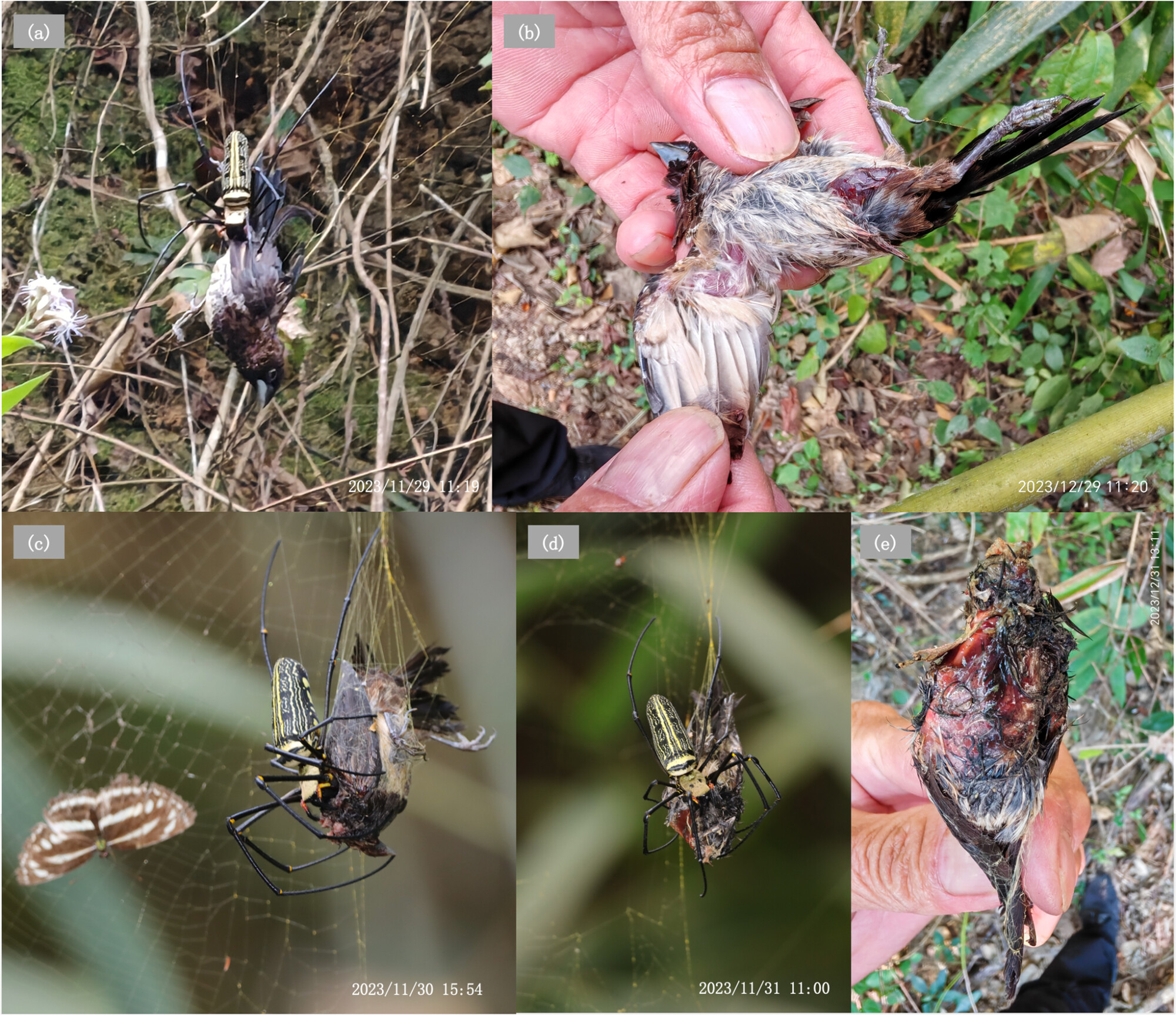In a study published in Integrative Conservation, researchers have documented four rare and striking instances of spiders preying on vertebrate animals at the Xishuangbanna Tropical Botanical Garden (XTBG) in Yunnan Province, Southwest China. The cases, which involved prey from avian, reptilian, and mammalian classes, provide insights into the hidden trophic interactions within tropical ecosystems.
While spiders are known primarily as predators of insects, occasional predation on small vertebrates has been recorded globally. However, such cases are severely underreported in tropical Asia.
XTBG researchers reported four rare instances of spider–vertebrate predation documented at the garden. The documented cases are as following:·
A Brahminy blind snake captured by a nocturnal ground spider (Bowie sp., Ctenidae), marking the first such snake-predation record for a spider in Asia.
An Etruscan shrew—one of the world's smallest mammals—succumbing to a huntsman spider (Heteropoda tetrica), a rare example of a spider overpowering warm-blooded prey.
A Bowring's gecko being consumed by another huntsman spider (Heteropoda venatoria), adding to the scarce records of spider-lizard interactions in Asia.
A white-rumped munia bird trapped in the web of a giant golden orb-weaver (Nephila pilipes). The spider was observed feeding on the bird over a three-day period, offering a rare glimpse into how spiders extract maximum nutritional value from large prey.
"These records are not just curiosities; they highlight a previously overlooked dynamic where large spiders can occasionally act as significant predators of small vertebrates," said LIU Wanlu of XTBG.
The research emphasizes the need for continued monitoring and conservation of tropical habitats like XTBG. Protecting these ecosystems ensures the survival of complex ecological relationships, including the subtle but important role of spiders as part of the natural balance.

Predation sequence of a white-rumped munia (Lonchura striata) by a giant golden orb-weaver (Nephila pilipes) at XTBG. (Image by LIU Wanlu)
Contact
LIU Wanlu
Xishuangbanna Tropical Botanical Garden
E-mail: liuwanlu@xtbg.ac.cn
First published: 15 September 2025

